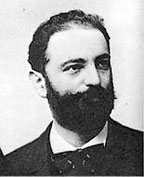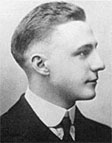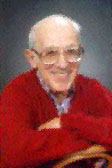What are BioRhythms?


The 23-day Physical Cycle is High for 11½ days that bring us greater energy and strength. We may increase our activity and produce greater output when the Cycle is High. For 11½ days, our Physical energy lessens. This is when we should not take on new loads, rather, this is a good time to maintain previous levels and allow our bodies to rebuild.
The 28-day Emotional Cycle is High for 14 days to bring us more enthusiasm and spirit. During this time, we may be more idealistic and expressive. For 14 days thereafter, we are more prone to realism, reservation and reflection.
The 33-day Intellectual Cycle is High for 16½ days when we learn more, think more, are more attentive and prone to new ideas. In the 16½ days following we are more inward as we digest what we have learned and contemplate the past.
Crossover Days occur in all three Cycles. This is the day when Cycle switches from High to Low or from Low to High It is this critical day that we cross the midpoint meridian and mishaps can take place. On this day in the Physical Cycle, we might be more accident prone and miss a step. When the Emotional Cycle reaches this day, we may be susceptible to angry or upset. A Crossover day in the Intellectual Cycle has more subtle effects but we can be subject to mistaken judgement. The day that the Cycle crosses over in either direction is critical because the momentum is neither up or down. At this point we susceptible a crisis of sorts from transitional chaos. In Cycle harmonics, Highs and Lows are motions which exert themselves in pendulum-like waves. A Crossover presents a period of transition without trend-like motion. This leaves a brief period of vulnerability.
Because of their mathematical precision, Biorhythms can be calculated from one’s day of birth to track their Highs and Lows, and Crossovers. This allows us to see where we are and forecast for any time. This will help us to understand our ebb and flow of energies and to work with them. The dance of life that is all around us in within us as well which allows for an element of predictability.
History of Biorhythms
Early:
Records from as far back as the fourth century, BC show that Androsthenes, the scribe for Alexander the Great who recorded descriptions of his marches, documented movements in the leaves of the tamarind tree. The leaves opened in the day and closed at night in a diurnal ‘sleep’ pattern. French scientist and astronomer, Jean Jacques D´Ortous de Mairan, performed tests in 1729 that showed that leaf patterns of the heliotrope plant continued to open by day and close by night even when kept on total darkness, proving the existence of an internal biological rhythm.
Related Studies:
Circadian Rhythms (cycles lasting about a day) that were known to exists in plants were also observed in animals. Early in the 1900s, Karl von Frisch and Ingeborg Beling noticed that bees visited flowers at certain times of the day even when placed in a man-made feeding station where nectar and daylight were absent. This demonstrated the presence of endogenous biological rhythms (originating within). Auguste Forel also found accurate test results on the biological systems of bees in 1910 and his work added to the interest in circadian rhythms. Sutherland Simpson and J.J. Galbraith made significant observations in mammalian behavior in 1906 while altering the environmental light-dark cycle. Gustav Kramer and Klaus Hoffmann studied the internal clocks of migrating birds in the 1950s and Colin Pittendrigh demonstrated that their internal clocks remained fixed regardless of environment. Results in the study of many types of circadian Rhythms are now pervasive.
Classical Theory:
ORIGINS OF THE 23-DAY PHYSICAL CYCLE
AND THE 28-DAY EMOTIONAL CYCLE
Two doctors simultaneously discovered the Physical Cycle and the Emotional Cycle between 1897 and 1902. They are Dr. Hermann Swoboda and Dr. Wilhelm Fliess, considered to be the ‘fathers of biorhythms theory.’ Both men came to very similar conclusions about Physical, Emotional and Intellectual Rhythms, and they did so independently, without knowing the work of the other. Both men wrote many groundbreaking papers, booklets and books on the subject.
Dr. Hermann Swoboda

Dr. Hermann Swoboda
was a Professor of Psychology at the University of Vienna who researched periodic variations in fevers and who found rhythmic changes in mood and health. By collecting data on reaction to pain, fever outbreaks, asthma, heart attacks tissue swelling, onsets of illness and recurring dreams, he concluded that we have a 23-day Physical Cycle and a 28-day Emotional Cycle that could be used to predict mood and energy levels. In a paper he published in 1900 he stated: Even if one could lead a life completely devoid of outside influence, life would nevertheless not be the same day after day. The best of health does not prevent man from feeling unwell at times, or less cheerful than he is normally. Swoboda also tied the cycles to the birth date. He produced two successful and distinguished books on the subject:
- Die Perioden des menschlichen Organismus in ihrer psychologischen und biologischen Bedeutung
(The Periodicity of Human Life) in 1904.
- Studien Zur Grundlegung Der Psychologie
(Basis of Psychology) in 1905
- Die kritischen Tage des Menschen und ihre Berechnung mit dem Periodenschieber
(The critical days of humans and their computation with the period slidegate valve) in 1909
his renown instruction booklet that described the Critical Days of Man<
- Das Siebenjahr. Untersuchungen über die zeitliche Gesetzmäßigkeit des Menschenlebens
Band 1: Vererbung (= alles Erschienene)
(The Year of The Seven) in 1917, his most famous book which gave analysis on the tendency toward predictable and
rhythmic births from generation to generation within the same family and that major events in life, such as birth, illness,
heart attacks and death fall on periodic days and involve family relationships.
Dr. Wilhelm Fliess

Dr. Wilhelm Fliess
was a nose and throat specialist researching occurrent illness and death in his patients who made groundbreaking discoveries and was elected president of the Germanie Academy of Sciences in 1910. His conclusions also confirmed the existence of the 23-day and the 28-day Cycles and he instroduced these works to his friend and colleague, Dr. Sigmund Freud. In his work he found that men are more influence by the 23-day Physical (masculine) Cycle and that women are more influenced by the 28-day Emotional (feminine) Cycle, but concluded that both genders carry both Cycles. He recorded births and deaths in family tree lines and found connections across generations led him to note how nature have given a ‘clock’ that is pervasive throughout the plants and animals. Fliess published findings in his book:
- Das Jahr des Lebendigen. Erstes und zweites Tausend (The Couse of a Life) in 1918.
Lectures that Dr. Fliess presented at many medical and scientific meetings were published in three books books between 1909 and 1929 as:<
- Mom Leben und Mom Tod (Of Life and Death)
- DasJahrim Lebendigen (The Year in the Living)
- Zur Periodenlehre (The Theory of Periodicity) a collection of lectures.
ORIGINS OF THE 33-DAY INTELLECTUAL CYCLE

University of Innsbruck
Alfred Teltscher
was a Viennese engineer and mathematician at the University of Innsbruck who noticed that his students had good days and bad days that followed a 33-day pattern, hence the 33-day Cycle. In is his many tests of the scholastic performance of High School students in the 1920s he found periods in which a student could readily grasp and absorb new subjects with mental agility, and comparable periods in which a student’ capacity to think quickly and clearly was diminished.

Dr. Rexferd Hersey
Dr. Rexford Hersey & Dr. Michael John Bennett
conducted similar research between 1928 and 1932 and came to a similar conclusion independent of any knowledge of Teltsher’s work. Dr. Hersey was a psychologist working at the University of Pennsylvania with assistance from Dr. Bennett when they developed these supportive simultaneous findings.
Popularization of the Theory

by George Thommen
George Thommen
popularized Biorhythms with the publication of his book:
- Is this your day?: How biorhythm helps you determine your life cycles
1964 (ASIN: B000RPD4HY)
1973 (ISBN-13: 978-0517007426)
1973 Rev. Ed. (ISBN-13: 978-0517505991)
1987 (ISBN-13: 978-5551592839).
Thommen was a Swiss-born American who discovered the earlier works of founding physicians. He introduced these theories to the United States with this book which contained all of the material from which subsequent authors would base their books as they met popular demand in the 1970s. Biorhythm calculators also came onto the market for people to instantly calculate their biorhythms for any given day.
Critique of BioRhythms
Science, Pseudoscience or Behavioral Science?
How do we classify observations of human behavior? What’s more, how do we combine these observation with theoretical conclusions of internal clockworks of exact measure? Observations of human behavior can be hard to classify. So let’s look at some of the terms.
Science can be defined at: branch of knowledge or study dealing with a body of facts or truths systematically arranged and showing the operation of general laws. In mathematical terms, it can be defined as: systematic knowledge of the physical or material world gained through observation and experimentation. It may be that neither of these terms can be properly applied to the theory of BioRhythms. Even though BioRhythms have durations that are defined and fixed, observing their effects on a person cannot be corroborated with repeatable experiments. So to some degree, believing in the internal clockwork of BioRythyms will call upon intuitive insight and interpretation of action and feeling in order to asses their validity. This is not a practice of exact measure. Therefore, BioRhythms may not be classified as a true science.
Psuedoscience can be defined as: a discipline or approach that pretends to be or has a close resemblance to science. Or as: practices mistakenly regarded as being based on scientific method. However, whether one believes in the theory of BioRhythms or not, its foundations are not pretentious and pioneers did not claim to use the scientific method. They base their results on the observations of human behavior. Therefore, BioRhythms may not be classified as a pseudoscience.
Behavioral Science is defined by Britannica as: any of various disciplines dealing with the subject of human actions, usually including the fields of sociology, social and cultural anthropology, psychology, and behavioral aspects of biology, economics, geography, law, psychiatry, and political science. In that regard, the theory of BioRhythms may be a behavioral science.
Opposition to BioRhythms
An article in the open-source reference, Wikipedia, sites work by Terrance Hines who is a professor of psychology at Pace University in New York. He supports a null hypothesis conclusion that there is no correlation between human experience and biorhythms that cannot be explained by coincidence. The article goes on to site other sources who likewise believe there is no credibility in BioRhythms, such as, physiologist Gordon Stein, and authors; Underwood Dudley, Arthur James and Natalia Peveto. Other sources in opposition to BioRhythms can also be found in some accredited journals.
Support of BioRhythms
Accident Deterrence was achieved by a transportation company by using BioRhythms. Science Digest Magazine reported that drivers for the Ohmi Railway Company in Japan would check in for their shift, some would receive a card warning to be careful because this is their critical day because of a Crossover in their BioRhythms. In the the first year the system went into effect, drivers achieved a remarkable 50 percent drop in accidents.
Accident Case Studies were conducted in the late 1930s by Hans Schwing, a behavioral scientist at the Swiss Institute of Technology. He studied 1400 accident case histories from Zurich insurance companies in which people were injured or killed. Of those injured, six out of ten were on a Physical or Emotional Crossover days, or a day when both Cycles Crossed over, on the days of the accidents. That means that 60% of the accidents happened on Physical or Emotional Crossover days, which only occur about 12% of the time. Of those actually killed, 65% died on Crossover or Double Crossover days.
Conclusion
BioRhythm is a theory of apparent relationship between the cycles of life, and the Physical, Emotional and Intellectual states of a person. The theory has not yet been scientifically proven. Arguments, therefore, can be found on both sides, for and against, BioRhythms. Some say the effects of BioRhythms are evident and observable, while others say they are unsubstantiated. It comes down to what you believe.
It is the opinion of this author that BioRhythms are part of our internal clockwork, and that, like many theories, it may take some time before they are widely recognized by the established academic community. Now that the 2017 Nobel Prize in Physiology or Medicine was jointly awarded to Jeffrey C. Hall, Michael Rosbash and Michael W. Young for their discoveries of molecular mechanisms controlling the circadian rhythm, we may expand the exploration of biological rhythms and internal clockworks, and how they influence our lives.
Additional Cycles
- 38-day (Intuition) Cycle
- 43-day (Aesthetic) Cycle
- 48-day (Self-Awareness) Cycle
Additional theories on this subject identify another Cycle such as:
- 53-day (Spiritual) Cycle
ORIGIN OF THE 38-DAY INTUITIVE CYCLE

Mort Gale
Mort Gale
evidently published the earliest documentation on the subject of additional Biorhythms with his precedent-setting book:
- Biorhythm Compatibility by Mort Gale (MortGale.com)
in 1978 (ISBN-13: 978-0446815550). In it he defined the 38-day Intuitive Cycle and identified it as the fourth Biorhythm as he “suggested an alternative plotting format, and offered an interpretation of biorhythms based on Jungian concepts of human functions.”
Note to readers: This author supports the findings of Mr. Gale and the belief in the 38-day Biorhythm. K. David Katzmire also theorized the existence of a fourth Biorhythm in the late 1970s, believing it to be 38-days in length, a conclusion he reached independent of any knowledge of the work of Mort Gale. However, it is Mort Gale who came up with the idea first and who published it in his book which paved the way for the rest of us. The independent discovery of Katzmire is only mentioned here as an attempt to support Mr. Gayle’s theory.
Perhaps the underlying principles that we find in Biorhythms are to be found elsewhere on earth. As we look to the affairs of nations and to the affairs of the world, may we remember the axion, ‘As Above, So Below,’ The tides of time itself may indeed turn in Rhythm as for all things there is a season. To seek answers to things great and small we need only to look within ourselves, even for the turn of civilizations and the Kala-Rhythms in our lives. For more to the Physical, Emotional and Intellectual triadic energies in our Rhythms, Personality Archetypes, Nations, and World Community, see links at: Sacred Geometry / Triadic Energy.